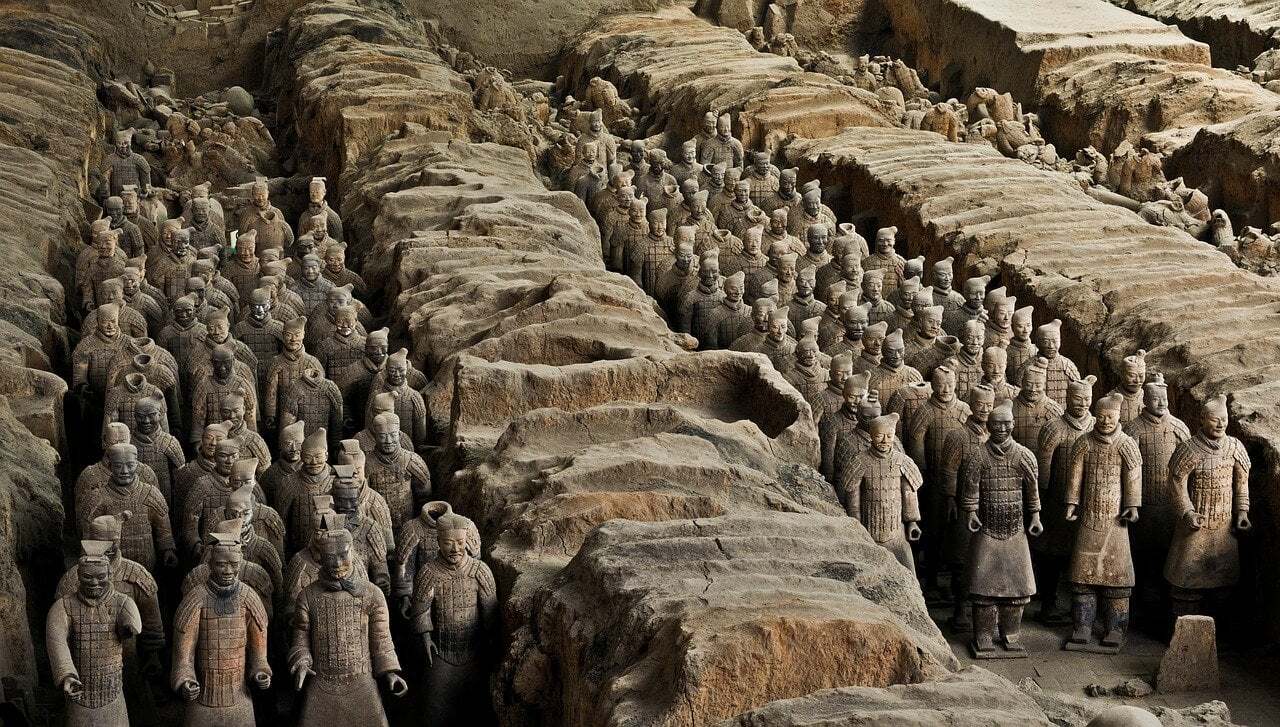Unveiling the Secrets of the Terracotta Army Pit in Xian

Imagine standing face-to-face with thousands of ancient warriors, each one unique, frozen in time for over two millennia. That's the awe-inspiring experience awaiting visitors at the Terracotta Army Pit in Xian, China. Discovered in 1974 by local farmers, this archaeological marvel showcases the incredible craftsmanship of the Qin Dynasty. These life-sized figures, including soldiers, horses, and chariots, were buried to protect China's first emperor, Qin Shi Huang, in the afterlife. The site offers a glimpse into ancient Chinese history and artistry, making it a must-see for travelers. Whether you're a history buff or just curious, the Terracotta Army promises an unforgettable journey into the past.
The Enigma of the Terracotta Army
The Terracotta Army is one of the most fascinating archaeological discoveries in the world. Buried for over 2,000 years, these life-sized clay soldiers were crafted to accompany China's first emperor, Qin Shi Huang, into the afterlife. Let's explore the secrets hidden within this ancient wonder.
The Discovery of the Terracotta Army
In 1974, farmers stumbled upon fragments of pottery while digging a well. This accidental find led to the unearthing of a massive underground army. Each soldier, horse, and chariot was meticulously crafted, showcasing the artistry of ancient China.
Pit 1: The largest of the three pits, Pit 1 houses over 6,000 soldiers. Rows of infantrymen stand ready for battle, their expressions and postures unique. This pit gives a glimpse into the military might of the Qin dynasty.
Pit 2: Smaller yet equally impressive, Pit 2 contains cavalry, archers, and chariots. The diversity of the troops here highlights the strategic planning of Qin Shi Huang's army.
Pit 3: Known as the command center, Pit 3 is the smallest but holds the highest-ranking officers. This pit provides insight into the hierarchy and organization of the ancient military.
The Craftsmanship Behind the Terracotta Warriors
Creating the Terracotta Army was no small feat. Thousands of artisans worked tirelessly to mold and assemble each figure. The level of detail is astounding, from the intricate armor to the lifelike facial features.
The Workshop: Evidence suggests that the warriors were crafted in workshops near the burial site. Artisans used local clay, and each figure was assembled in parts before being fired in kilns.
Individuality: No two soldiers are alike. Each warrior has distinct facial features, hairstyles, and expressions, reflecting the diversity of the emperor's real army.
The Purpose of the Terracotta Army
Why did Qin Shi Huang commission such an elaborate burial site? The Terracotta Army was meant to protect the emperor in the afterlife, ensuring his rule continued beyond death.
Symbol of Power: The army symbolizes the emperor's power and authority, even in death. It was a testament to his ambition and desire for immortality.
Afterlife Beliefs: Ancient Chinese believed in an afterlife where the deceased needed protection and companionship. The Terracotta Army served this purpose, guarding the emperor's tomb.
The Ongoing Mysteries
Despite decades of research, many questions about the Terracotta Army remain unanswered. Archaeologists continue to study the site, hoping to uncover more secrets.
Unopened Tomb: Qin Shi Huang's tomb itself remains unopened. Concerns about preserving the artifacts and potential traps have kept researchers at bay.
Lost Technologies: Some techniques used to create the warriors have been lost to time. Modern scientists are still trying to understand the methods used by ancient artisans.
The Terracotta Army is a testament to the ingenuity and artistry of ancient China. Each visit to this site reveals new secrets, keeping the world captivated by its mystery.
Discovering the Timeless Appeal of the Terracotta Army
Visiting the Terracotta Army Pit in Xian offers a unique glimpse into ancient Chinese history. This archaeological wonder, with its thousands of life-sized soldiers, horses, and chariots, stands as a testament to the craftsmanship and ambition of the Qin Dynasty. Each figure, with its distinct features, tells a story of a time long past yet still resonates today. Walking through the pits, you can almost feel the presence of the warriors, guarding their emperor in the afterlife.
This site is more than just a historical monument; it's a reminder of the rich cultural heritage that China offers. Whether you're a history buff or just curious, the Terracotta Army promises an unforgettable experience. As you leave, you'll carry with you not just memories but a deeper appreciation for the mysteries and marvels of ancient civilizations.

